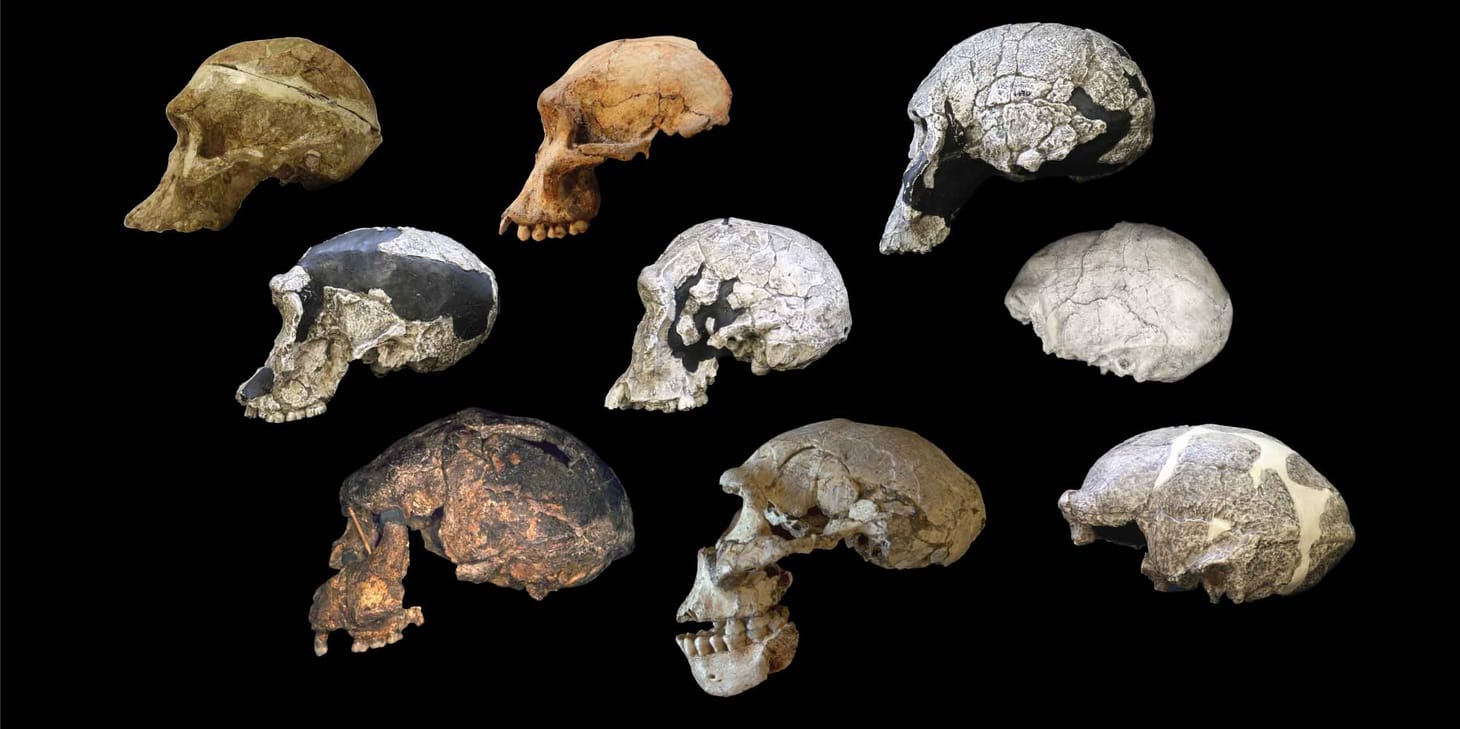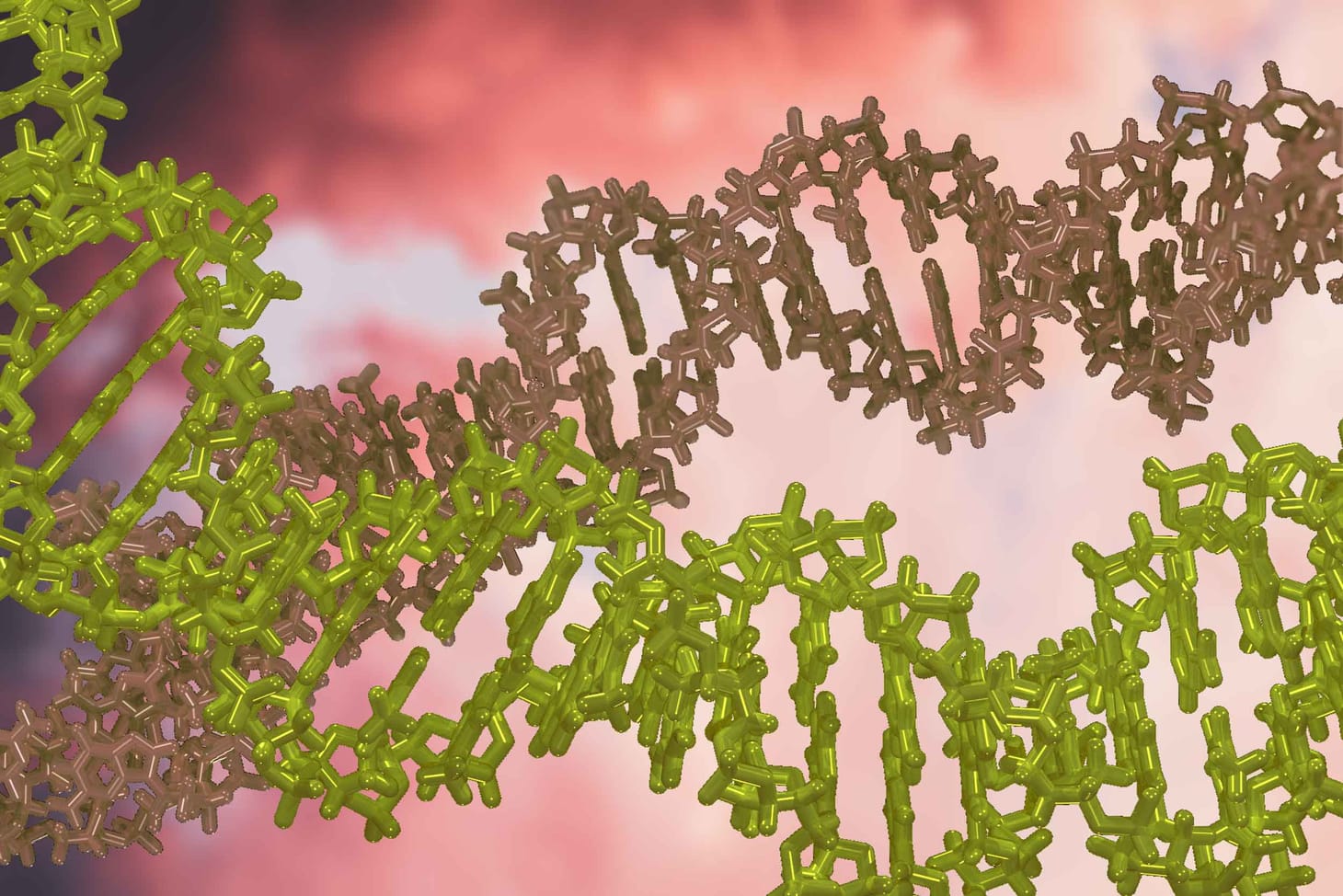Growing genetic data suggest a two-phase model for prehistoric population expansions in Africa
I describe results from two papers of African genetic variation, which show that the population growth from agriculture followed an earlier demographic expansion.
New samples from varied populations in Africa are changing the way we understand the history of population structure on that continent. The picture growing from SNP variation and mtDNA helps to confirm an idea that I drew largely from archaeology: At least two phases of population growth were important in ancestral African groups.
One of these was the mid-Holocene population growth that resulted from the invention and spread of agricultural subsistence. This recent demographic expansion was preceded by an earlier phase of growth, dating to before 30,000 years ago.
Two recent papers from the Stanford research group of Joanna Mountain have contributed valuable new data toward this model. Earlier this spring, a paper by Brenna Henn and colleagues (2011) presented new data on SNP variation in recent African hunter-gatherer populations. Now, Christopher Gignoux, Henn and Joanna Mountain (2011) have examined the evidence for Holocene population growth in Europe, Africa and Southeast Asia, from within-haplogroup variability of mtDNA haplogroups.
In this new paper, the idea is that earlier mtDNA samples lacked the resolution to examine events of the last few thousand years, either because they included only small sequences (e.g., control region) with limited variation, or because they included whole mtDNA genomes with too few individuals to look at within-haplogroup coalescents. So in their new work, these researchers have added more individuals. It is still a small number (425 total) and so I expect that we will see better ones in the next few years.
The results provide some nice matches for the archaeology of early agriculture. For example, in Africa:
We find two periods of population expansion within our sample of lineages originating during the Holocene in western Africa. Although the majority of coalescent events occur during the Holocene, a number of lineages from this sample also coalesce during the Upper Paleolithic. The earliest growth begins at ~38,000 ya (CI: 33,500–45,000 ya) (Table 1 and Fig. S1) and the second period begins at ~4,600 ya (CI: 3,000–10,000 ya) (Table 1 and Fig. 1B). The correspondence between the timing of genetic evidence for a sharp increase in population size at 4,600 ya in our Holocene sample of sub-Saharan Africans and the archaeological evidence for origins of agriculture in western Africa is quite close (Fig. 1B and Table 1). In contrast, our southern African Upper Paleolithic sample representative of hunter-gatherers shows no growth over the past 20,000 y. We suggest Bantu-speaking farmers and other pastoralist groups migrated throughout southern Africa 2,000 ya (27) without impacting southern African mtDNA lineages (Fig. 1B).
We can’t really understand the pattern of genetic variation within Africa without understanding when the population grew. In Africa, Middle Stone Age genetic variation must have been more extensive than that in other regions of the world. But the survival of that MSA variation to the present day depends on the demography of populations over the past 50,000 years. In a growing population, fewer lineages will be lost by random genetic drift. So if Gignoux, Henn and Mountain are right about the growth of West African populations by 35,000 years ago, we might expect that region to preserve some extensive variation from MSA times.
That might explain why that population preserves very deep Y chromosome lineages, recently identified by Cruciani and coworkers (2011). Regarding only mtDNA, one might conclude that a historical paucity of migration between hunter-gatherer and agricultural groups would be the most important reason why MSA variation remains in the present-day African population. This has been the explanation for survival of deep mtDNA lineages in southern Africa, for example. The Y chromosome result and the current paper remind us that population growth can also preserve variation from earlier time periods.
This proposal of African population history matches very well with my thinking. When my collaborators and I published our paper on recent selection accelerating in human populations (Hawks et al. 2007), the history of population expansion in Africa was a major part of our analysis. We based our model upon the archaeological record, suggesting early population growth in Africa by 35,000 years ago followed by a much larger agricultural expansion after 5000 years ago.
The evidence for relatively late agricultural intensification, within the last 4000–5000 years in sub-Saharan Africa, is very clear archaeologically. Less clear: How big was the earlier, pre-agricultural human population? The LSA might correspond to a demographic intensification, generally after 45,000 years ago. Genetics has certainly seemed to support such a view, and we found it consistent with the evidence that positive selection had increased in rate much earlier in Africa than in other regions. Still, the more detailed study by Gignoux and colleagues helps to clarify this picture.
The paper by Gignoux and coworkers includes data from Asia and Europe also, and they address some of their conclusions to those regions. A couple are worth consideration as part of a wider effort to understand the transition to agricultural subsistence and its effects on demography.
For example, the authors show agricultural population growth to have been late in Southeast Asia. Again, useful. I think we need to exert some effort making sure that the initial dispersal of people into South/Southeast Asia can be differentiated from the post-agricultural history. But assuming that Gignoux and colleagues are correct, it makes sense in an overall picture of slowly adapting early crops to tropical climate regimes, or replacing early domesticates with different ones in those areas.
I am less sanguine about their results for Europe. They show a gradual period of growth associated in time with the Younger Dryas (around 12,000 years ago), which could make sense in the archaeology. But I am not convinced that the “European” haplogroups here are really European to that time depth. We know that the Neolithic and post-Neolithic saw some large-scale shifts in the frequencies of mtDNA haplogroups in Central and Western Europe. Some Upper Paleolithic Europeans probably contributed mtDNA to this later population, but I have no confidence that the proportion was great enough to accurately infer the demography of that pre-Neolithic population. (This is also a problem with the new paper in Current Anthropology by Peter Rowley-Conwy. I’ll discuss this sometime soon.)
The next frontier in reconstructing the population history of Europe will be ancient DNA. A good sample of Neolithic and pre-Neolithic whole mtDNA genomes would settle this question and allow inferences about the kind of demographic recovery Europe underwent after the Last Glacial Maximum.
An open question is to what extent populations beyond Europe have similar problems with confounds between migration and demographic growth. The European population of today reflects West Asian population dynamics 10,000 years ago. The East African population today reflects West African population dynamics from before the Bantu expansion, possibly to a similar extent. The population of Southeast Asia reflects the population dynamics of early rice agriculturalists in South China. And so on.
Adding large-scale migration and partial population replacement to this kind of demographic analysis is not easy, but it will be essential if we want a better picture of how agriculture affected human populations. Considering these problems, I think it’s easy to see why I started working on Holocene population dynamics. Evidence about Late Pleistocene populations, like MSA Africans and Neandertals, still lies within our genomes. But we see it through a distorted lens. The distortion comes from Holocene population movements and population growth. If we don’t account for those Holocene dynamics, we will come to incorrect conclusions about the Late Pleistocene dynamics.
I find this a compelling problem. This is what anthropology is really good for. Working with archaeological and historical knowledge, we can bring multiple lines of evidence to bear upon the question of post-agricultural population dynamics. But it’s a deep, deep field with a lot of specialized literature, and not easy to synthesize.
References
Cruciani, F., Trombetta, B., Massaia, A., Destro-Bisol, G., Sellitto, D., & Scozzari, R. (2011). A revised root for the human Y chromosomal phylogenetic tree: the origin of patrilineal diversity in Africa. The American Journal of Human Genetics, 88(6), 814-818. https://doi.org/10.1016/j.ajhg.2011.05.002
Gignoux, C. R., Henn, B. M., & Mountain, J. L. (2011). Rapid, global demographic expansions after the origins of agriculture. Proceedings of the National Academy of Sciences, 108(15), 6044-6049. https://doi.org/10.1073/pnas.0914274108
Hawks, J., Wang, E. T., Cochran, G. M., Harpending, H. C., & Moyzis, R. K. (2007). Recent acceleration of human adaptive evolution. Proceedings of the National Academy of Sciences, 104(52), 20753-20758. https://doi.org/10.1073/pnas.0707650104
Henn, B. M., Gignoux, C. R., Jobin, M., Granka, J. M., Macpherson, J. M., Kidd, J. M., ... & Feldman, M. W. (2011). Hunter-gatherer genomic diversity suggests a southern African origin for modern humans. Proceedings of the National Academy of Sciences, 108(13), 5154-5162. https://doi.org/10.1073/pnas.1017511108
John Hawks Newsletter
Join the newsletter to receive the latest updates in your inbox.



